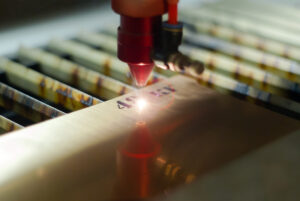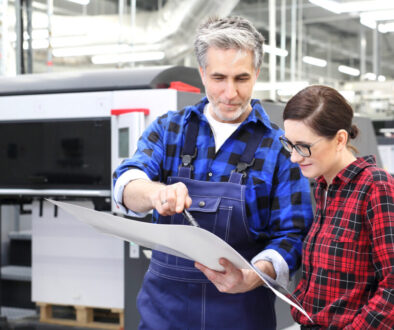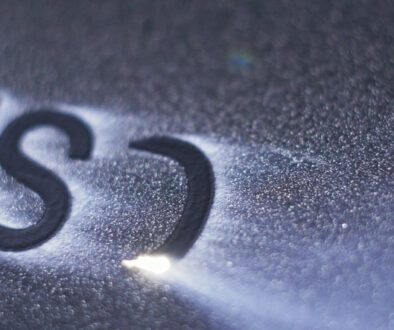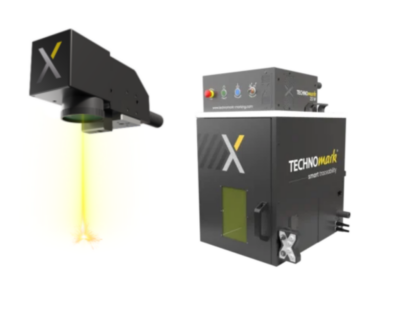3 Advantages of Laser Marking on Automotive Components

3 Advantages of Laser Marking on Automotive Components
In the world of automotive manufacturing, there’s no room for guesswork; every part must be spot-on, built to last, and meet the highest standards. Cars are complex machines, and each component needs to meet tough specs and hold up over time. That’s exactly where laser marking technology steps in, offering a reliable way to ensure parts are traceable, compliant, and built to perform.
Laser marking has completely changed the game when it comes to how auto manufacturers label and track their parts. Instead of relying on old-school methods like inkjet printing or mechanical engraving, which can wear off or lack clarity, laser marking uses focused light to permanently etch clean, high-contrast marks right into the material’s surface.
Why does this matter? In an industry as massive and interconnected as automotive manufacturing, knowing exactly where a part came from and where it’s going is important.
With millions of cars on the road and supply chains stretching across continents, having a foolproof way to trace components from the assembly line to the scrapyard is a must. Laser marking not only delivers that traceability but also helps streamline production and boost overall product quality.
In this article, we’ll break down the three key advantages of using laser marking on automotive components and explain why it has become a go-to solution for forward-thinking manufacturers.
Key Benefit #1: Unmatched Traceability and Industry Compliance
The automotive industry operates under strict regulatory frameworks that demand full accountability for every component that goes into a vehicle. Laser marking steps up to the challenge by creating permanent, tamper-proof IDs on each part, ensuring lifetime traceability from the factory floor to the final mile.
Here’s a closer look at why this matters:
Meeting Regulatory Requirements
Modern vehicles contain thousands of components, each of which requires accurate identification for safety and compliance purposes. Laser marking technology helps manufacturers to comply with industry regulations such as NHTSA standards and international safety requirements. These markings include essential information, such as part numbers, manufacturing dates, batch codes, and supplier identification.
The permanent nature of laser markings ensures that critical information remains legible and intact, even after years of exposure to harsh operating conditions. This reliability is crucial for meeting regulatory audits and maintaining compliance with evolving safety standards.
Streamlined Recall Management
When recalls occur, manufacturers must quickly identify affected components and trace them to specific vehicles. Auto parts laser marking machines produce precise, standardized markings that facilitate the rapid identification and sorting of components. This capability significantly reduces the time and cost associated with recall management while ensuring comprehensive coverage of affected parts.
The traceability provided by laser marking extends beyond recalls to warranty claims and quality investigations. Manufacturers can quickly trace components back to their source, identify potential issues in the supply chain, and implement corrective measures to prevent future problems.
Supply Chain Visibility
Traceability in the automotive industry extends throughout complex global supply chains. Laser marking enables manufacturers to track components from raw material suppliers through multiple tiers of manufacturing and assembly. This visibility helps identify bottlenecks, optimize inventory management, and ensure quality consistency across all suppliers.
Resource: Ready to rev up your production? Check out all that we do here for automotive components
Key Benefit #2: Superior Durability and Environmental Resistance
Automotive components face some of the harshest conditions imaginable. Under-the-hood parts are constantly exposed to intense heat and corrosive fluids, while exterior elements battle UV rays, rain, snow, and shifting temperatures.
Traditional marking methods often can’t keep up. Laser marking, however, is engineered for durability, making it the go-to for parts that need to perform under pressure.
Here’s why it stands out:
Withstanding Extreme Conditions
Laser markings maintain their integrity and legibility when exposed to temperatures ranging from -40°F to over 500°F. This temperature resistance makes laser marking ideal for the engine
components, exhaust systems, and other parts that experience significant thermal stress.
Chemical resistance is another critical advantage. Automotive components encounter various fluids, including:
- Oils
- Coolants
- Brake fluids
- Cleaning solvents
Laser markings resist degradation from these chemicals, ensuring that identification remains clear and readable throughout the component’s service life.
Permanent Integration
Unlike adhesive labels or printed markings that can fade, peel, or wear away, laser markings become an integral part of the component surface. The laser process creates permanent changes in the material structure, resulting in markings that cannot be removed without damaging the underlying component.
This permanence eliminates concerns about counterfeit parts, as legitimate laser markings cannot be easily replicated or transferred to unauthorized components. The anti-counterfeiting benefits of laser marking help protect brand reputation and ensure that only genuine parts enter the supply chain.
Environmental Sustainability
Laser marking contributes to environmental sustainability by eliminating the need for consumables such as:
- Inks
- Solvents
- Adhesive labels
This reduction in consumable materials decreases waste generation and eliminates the environmental impact associated with producing and disposing of these materials.
The energy efficiency of modern laser marking systems further enhances their environmental benefits. These systems consume minimal power during operation and require no warm-up
time, reducing overall energy consumption compared to alternative marking methods.
Key Benefit #3: High Precision and Versatility
Laser marking brings an impressive level of precision to the table, allowing manufacturers to etch detailed, high-quality markings on components of all shapes and sizes, from tiny fasteners to large engine blocks.
It’s this combination of accuracy and adaptability that makes it such a versatile tool across the automotive world.
Here’s how it delivers:
Material Compatibility
Auto parts laser marking machines can effectively mark a wide range of materials commonly used in automotive manufacturing. Steel, aluminum, stainless steel, titanium, and various metal alloys all respond well to laser marking. The technology also works effectively on engineering plastics and composite materials.
Different laser types and parameters can be optimized for specific materials, ensuring optimal marking quality and durability. This flexibility allows manufacturers to implement consistent marking standards across diverse component types and materials.
Non-Contact Processing
The non-contact nature of laser marking prevents damage to delicate or precision-machined components. Traditional marking methods, such as dot peen, can introduce stress concentrations or dimensional changes that compromise component performance. Laser marking eliminates these concerns while maintaining the structural integrity of marked parts.
This gentle processing capability makes laser marking suitable for thin-walled components, finished surfaces, and parts with tight dimensional tolerances. Manufacturers can apply markings to completed components without risk of damage or distortion.
Complex Design Capabilities
Laser marking systems can create intricate designs, logos, and data codes with exceptional detail and consistency. Two-dimensional data matrix codes, QR codes, and linear barcodes can be marked with precise dimensions and high contrast ratios, ensuring reliable machine readability.
This precision is especially advantageous in the automotive industry, where marking components inside:
- Vehicle cabin
- Dashboard elements
- Control knobs
- Airbag housings
- Interior trim
These parts often require permanent identifiers for traceability, branding, or regulatory compliance, but they must also maintain a clean aesthetic and ergonomic integrity. Laser marking enables this balance by creating hidden yet high-resolution markings.
Moreover, the ability to mark curved surfaces, recessed areas, and confined areas makes laser marking ideal for the intricate geometries found in vehicle interiors. Whether applying unique serial numbers to a part hidden beneath a panel or branding logos onto a curved surface, such as a steering wheel insert, laser systems offer the flexibility to deliver consistent results without damaging surrounding components.
This level of design versatility allows manufacturers to mark parts where it is least disruptive and most accessible for scanning, without compromising design intent or material performance, something traditional labeling methods cannot match.
Frequently Asked QuestionsWhat types of information can be laser marked on automotive components? Laser marking can include part numbers, manufacturing dates, batch codes, supplier information, serial numbers, logos, 2D data matrix codes, QR codes, and regulatory compliance markings. The specific information depends on regulatory requirements and manufacturer specifications. How does laser marking compare to other marking methods in terms of cost? While initial equipment investment may be higher, laser marking offers lower operating costs due to eliminated consumables, reduced maintenance requirements, and higher processing speeds. The long-term cost benefits typically outweigh the initial investment. Can laser markings be applied to both metal and plastic automotive components? Yes, laser marking technology is compatible with a wide range of materials including metals, plastics, composites, and ceramics commonly used in automotive manufacturing. Different laser parameters and wavelengths can be optimized for specific materials. How small can laser markings be while maintaining readability? Modern laser marking systems can create markings as small as 0.1mm in height while maintaining excellent readability. The minimum size depends on the material, marking method, and readability requirements. |
Driving Automotive Manufacturing Forward
The advantages of laser marking on automotive components extend far beyond simple part identification. Enhanced traceability capabilities ensure regulatory compliance and streamline recall management, while superior durability guarantees marking integrity throughout component lifecycles.
The precision and versatility of laser marking technology allow it to accommodate a wide range of materials and complex designs, making it an ideal solution for modern automotive manufacturing.
Why Choose Technomark North America for Your Laser Marking Needs?
For manufacturers seeking to integrate laser marking into their operations, Technomark North America provides industry-leading solutions specifically designed to meet the demands of the automotive sector.
From improving product traceability to ensuring compliance with regulatory standards, our cutting-edge laser marking systems deliver precision, reliability, and durability. Contact Technomark North America today to learn how we can help you stay ahead in the competitive automotive manufacturing landscape.




